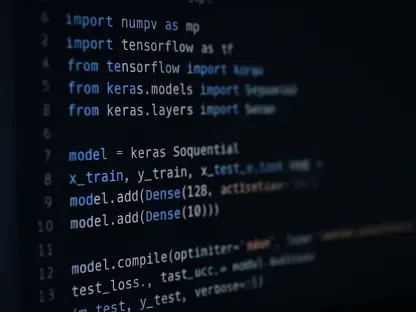In the dynamic landscape of software development, programming languages continually evolve to offer efficient, safe, and scalable solutions. The Zig programming language has been generating buzz and interest, primarily for its potential as a modern replacement for the established C language. Since its introduction by Andrew Kelley in 2015, Zig has gained momentum, especially in systems programming, where performance and direct hardware access are critical. The language’s emergence is not just about introducing a new tool for developers; it challenges the very foundations of how low-level programming can be executed with greater safety and efficiency.
Zig’s Rise and Key Features
Zig’s emergence as a challenger to C hinges on several critical features that differentiate it from traditional programming languages. One of Zig’s significant promises is its focus on safety and performance, offering programmers the ability to access system memory directly, akin to C and Rust, while minimizing common pitfalls related to memory management errors. This commitment to safer memory management is evident in Zig’s explicit approach to handling memory allocation, as opposed to the implicit mechanisms found in C. By employing a standard library that utilizes Allocator objects, Zig signals the occurrence of memory allocation transparently, empowering developers to manage allocations consciously based on the runtime environment.
Another distinct feature contributing to Zig’s appeal is its minimalist syntax, which promotes clarity and reduces potential code-related errors. Zig’s design philosophy emphasizes simplicity, striving to present a programming environment where there is often a single clear way to perform a task. This is aligned with Zig’s goal to improve productivity through straightforward syntactic structures that resonate with concise and maintainable code. Prominent developers have vouched for Zig’s user-centered design, which arguably attracts a spectrum of programmers seeking a more intuitive coding experience without compromising the language’s versatility.
Transitioning From C’s Shortcomings to Zig’s Solutions
A prominent theme within Zig’s framework is its intention to address and improve upon well-documented limitations of C. This ambition is demonstrated through Zig’s unique error-handling mechanism. Traditional programming languages, like C, utilize exception-throwing systems, which can lead to unpredictable program states and harder-to-trace bugs. In contrast, Zig replaces this with a more direct control flow that aligns with its transparent operational philosophy, ensuring compile-time safety and reducing runtime surprises. Through this approach, Zig fosters reliability by encouraging developers to manage errors predictably and efficiently.
In addition, Zig’s development roadmap includes a significant focus on becoming independent from the LLVM toolset, seeking to foster standalone compiler functionality. This step not only signifies a push toward language maturity but also reflects a strategic move to enhance compatibility and portability. For developers working on diverse system architectures, this initiative promises flexibility and adaptability, catering to a growing demand for seamless integration across varied platforms without compromising performance or security.
Interoperability and Memory Efficiency
Interoperability is a crucial aspect of Zig’s strategy to gain traction in a developer ecosystem heavily dominated by C and C++. Zig adopts a pragmatic approach to language integration by enabling the embedding of C and C++ libraries directly within Zig projects. This ability ensures that existing code bases can be utilized while leveraging Zig’s enhanced safety features, making it an attractive option for projects transitioning from older languages. Furthermore, Zig provides robust cross-compilation capabilities, which significantly benefit developers seeking to create applications that function across multiple platforms and systems without rewriting significant portions of code.
Zig’s approach to memory efficiency further strengthens its position as a viable alternative to C. In contrast to dynamic memory allocation models traditionally employed in C, Zig advocates for explicit and clear memory management, facilitating mechanisms that enhance code readability and predictability. By eliminating pre-processor macros typical in C in favor of built-in compile-time evaluations, Zig not only streamlines the development process but enhances code structure and clarity. These methodological advancements in managing memory allocation offer developers greater control over their applications’ performance and reliability.
Safer and Stronger Error Resistance
Zig extends its appeal through embedded safety checks that protect against buffer overflows and memory leaks, areas of concern prevalent in C programming. Its design incorporates feature allocations and debug layers, providing an added layer of error protection. The language’s built-in safety measures ensure that code is more resistant to errors, contributing to a robust error-handling framework that allows developers to focus more on the logic and functionality of their applications rather than debugging unpredictable runtime behaviors.
Zig’s conditional compilation approach further underscores its innovative comparison to the error-prone mechanisms in C. By adopting a more structured and readable code evaluation process during compilation, Zig reduces the likelihood of runtime errors and optimizes the code-writing experience. Developers are provided with clear, concise compile-time evaluations, enhancing optimization processes and delivering a smoother, more predictable development cycle.
Future Trajectory and Industry Adoption
Despite Zig still being in its pre-1.0 version phase, it has already established a significant presence in various production projects, showcasing its practical viability across different sectors. The language’s inclusion in prominent projects like Bun.js and TigerBeetle illustrates a growing trust in its capabilities across diverse industries. Furthermore, ventures within companies such as Uber reveal Zig’s specialized use cases and the benefits it offers in real-world application scenarios, such as improved maintainability and performance efficiency.
The focus of Zig’s ongoing development continues to be trained on reinforcing its modern safety and efficiency features, maintaining its magnetism for developers eager to innovate within the systems programming domain. Whether it is through encouraging open-source contributions or refining its self-hosting capabilities, Zig remains positioned as a formidable candidate for those seeking to usher in the next generation of programming languages tailored to meet the needs of an evolving technological landscape.
Conclusion: The Road Ahead for Zig
In the ever-changing world of software development, programming languages frequently evolve to provide more efficient, safe, and scalable solutions. One language that has been generating quite a buzz is Zig. Since its introduction by Andrew Kelley in 2015, Zig has caught the attention of many developers, especially within systems programming. This area of software development places a high priority on performance and the ability to access hardware directly, two arenas where Zig shows great promise.
Zig is emerging as a modern and attractive alternative to the well-established C language. C has long been valued for its performance and close-to-the-metal capabilities, but Zig aims to keep these strengths while introducing improvements in safety and efficiency. This makes it particularly appealing for developers concerned about security vulnerabilities that can be associated with C’s low-level operations.
Zig’s rise is not just about offering another tool in the developer’s kit; it is about challenging the fundamental ways low-level programming is done. By allowing developers to write code that is both efficient and safe, Zig represents a shift towards more robust systems programming without sacrificing performance. As a result, Zig is becoming an exciting option for those looking to develop software that meets the demands of modern technology and security landscapes. This is especially true as the digital world increasingly demands both impeccable performance and airtight security.









